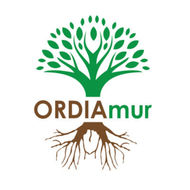Molecular Barcoding Reveals the Genus <i>Streptomyces</i> as Associated Root Endophytes of Apple (<i>Malus domestica</i>) Plants Grown in Soils Affected by Apple Replant Disease (2021)
Mahnkopp-Dirks F., Radl V., Kublik S., Gschwendtner S., Schloter M., Winkelmann T.
Phytobiomes Journal, 5 (2), 177-189
doi:10.1094/pbiomes-07-20-0053-r
Abstract
Apple replant disease (ARD) occurs when apple is repeatedly planted at the same site, leading to growth reductions and losses in fruit yield and quality. Up to now, the etiology has been poorly understood; however, soil (micro)biota are known to be involved. Because endophytes often colonize plants via the rhizosphere, this study aimed at comparing the bacterial endophytic root microbiome in plants growing in ARD-affected and unaffected soils from three different sites based on greenhouse biotests using a molecular barcoding approach. The initial endophytic microbiome of the starting material (in vitro propagated plants of the apple rootstock M26) did not significantly affect the overall richness and diversity of the endophytic community in plants after 8 weeks of growth in the respective soils but some genera of the initial microbiome managed to establish in apple roots. Proteobacteria was the dominant phylum in all samples. No differences in diversity or number of amplicon sequence variants (ASVs) between plants grown in ARD soil and unaffected soil was observed. However, several ASVs of high abundance uniquely found in plants grown in ARD-affected soils were Streptomyces spp. In soil from all three sites, these Streptomyces spp. were negatively correlated with plant growth parameters. Future inoculation experiments using selected Streptomyces isolates have to prove whether bacteria from this genus are opportunists or part of the ARD complex. For the first time, the bacterial endophytic community of apple roots grown in ARD-affected soils was characterized, which will help us to understand the etiology of ARD and develop countermeasures. [Formula: see text] Copyright © 2021 The Author(s). This is an open access article distributed under the CC BY 4.0 International license .